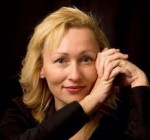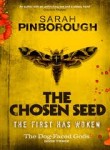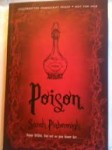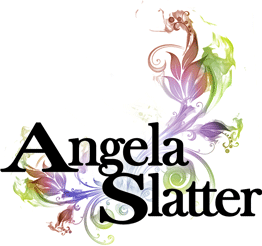 I recently discovered the work of multi-talented UK author Sarah Pinborough. I devoured the Dog-Faced Gods trilogy with delight, relish and a dash of mustard. Ms P doesn’t know me from a bar of soap but was still kind enough to answer some questions.
I recently discovered the work of multi-talented UK author Sarah Pinborough. I devoured the Dog-Faced Gods trilogy with delight, relish and a dash of mustard. Ms P doesn’t know me from a bar of soap but was still kind enough to answer some questions.
Her work is inflected with the dark, the weird and all things touched by noir. She’s won multiple British Fantasy Awards, and is published by both Gollancz and Jo Fletcher Books at Quercus in the UK and by Ace, Penguin in the US. As Sarah Silverwood, she’s written for a YA audience and she’s also written for tv (including an episode of New Tricks).
For a taste of her short fiction, head over to Nightmare Magazine for The Nowhere Man.
 1. So first things first: how did you end up doing the writing gig? Was it the lure of starving in a garret in Paris?
1. So first things first: how did you end up doing the writing gig? Was it the lure of starving in a garret in Paris?
Ha! I actually wrote my first 5 (or 6) novels while working as a teacher but it was great to be able to go full-time four years ago. I think there is no ‘end up’ doing writing. Writers will always write and if they’re lucky enough to sell then all the better. I had been in the States while I was writing my first horror novel and on the way back I picked up some paperbacks at the airport and decided to send my book to the publisher when it was done. They bought it, and published 6 novels of mine in the the end, before I got my deals with Gollancz in the UK. Since then I’ve been lucky and have continued keeping my head afloat and getting the deals in. I’m looking forward to having books back on the shelves in the States this year though, when A Matter of Blood comes out with Ace in April.
2. You are, to say the least, a multi-genre writer: horror, fantasy/fairy tale,  crime, tv … did I miss anything? What attracts you to playing in more than one pond and is there one you think you do better than the rest?
crime, tv … did I miss anything? What attracts you to playing in more than one pond and is there one you think you do better than the rest?
I just like telling stories – mainly dark ones that have something slightly weird in them – so I never really think in terms of genre. The biggest shift for me has been writing the three fairy tale reworkings coming out this year from Gollancz as they are far more mainstream and probably aimed at a more traditionally female audience than my other novels. But they still have some dark twists in them. What I’m good at or not is down to the individual reader to judge!
3. Do you find there are major differences in how you write for tv and writing a novel?
Writing TV or film is a completely different skill set than writing a novel. The main thing being that screenwriting is very much a collaborative process. Producers, script editors and directors all have notes and changes they want and a lot of time is spent around tables discussing what changes could be made to accommodate all the different viewpoints. And then of course, when it’s filmed the editor who cuts it will add his or her layer to the storytelling. When you write a novel, you write it, your editor gives you a few notes and then that’s that. I would say that writing TV is more pressured because you can’t move the deadline. When shooting starts the script has to be ready. It’s a really exciting process though.
4. Which of your books are you proudest of (yes, I know I ended that with a preposition – somewhere a grammar fairy died)?
This is really hard to say. I’m quite proud of a lot of them. I guess it’s like trying to choose between very different children – you can’t have a favourite, they all have a place in your heart. I am proud of The Language of Dying (coming later this year from Jo Fletcher Books) because a lot of it was based on personal experience, but I’m proud of all my books – especially since my signing with Gollancz and Jo Fletcher.
 5. What was the inspiration for the Dog-Faced Gods series? Did you always know how it was going to end? Nice redemption arc, by the way!
5. What was the inspiration for the Dog-Faced Gods series? Did you always know how it was going to end? Nice redemption arc, by the way!
I wanted to write a crime story with supernatural undertones (very much influenced by reading John Connolly and Michael Marshall) but I also wanted to work with the concepts of Milton’s Paradise Lost. Something gritty and yet slightly futuristic and sci-fi that explored religion. I’m pretty pleased with how it turned out. As for the ending, I had that figured out at the beginning – but it was about all I had figured out – that final scene!
6. And you’ve written a YA series, The Nowhere Chronicles, as Sarah Silverwood – how did that come about?
While I was teaching I wanted to try my hand at writing the sort of book I loved as a kid. As an adult I don’t read a lot of straight fantasy but as a child I loved it. I’d been on a guided walk around London with some friends and we were coming up with stuff about all the strange places in Clerkenwell as we learned about them, and they became the main settings for some of the story. I really enjoyed writing the three books and I think the plotting in them is as complex as in The Dog-Faced Gods. They’re also quite dark, but quite magical too. More Pullman’s His Dark Materials than Harry Potter though although they have received some positive comparison to the latter as well.
7. You’ve got a horror film, Cracked, under development? How much  involvement do you have in that whole film-making process – or do you write the script and then let it go?
involvement do you have in that whole film-making process – or do you write the script and then let it go?
If/when it starts filming I doubt I’ll have a lot of involvement, although the director is keen to have me on the set the whole time which is great, but as with TV there are a lot of draft stages. Often things need re-working for reasons you never contemplate when writing – the director might find what you’ve written hard or too expensive to shoot, or they might want to tell a part of the story a different way – and as with TV, the producers – who are paying for everything – also have comments on the script. So we’ve got another round of notes to do at the moment and then hopefully it will get moving.
8. Your fairy tale series for Gollancz is highly anticipated. How did you choose which fairy tales you wanted to use as your skeletons for Poison, Charm and Beauty? Childhood favourites or ?
I wanted to go with three very well known ones, and so Snow White, Cinderella and Sleeping Beauty were obvious choices. Of course they’re quite different in my versions but I have kept all the traditional tropes in and woven in other fairy tale characters. Although you can start with any of the three, they are interlinked and the characters show up in each other’s stories. It’s a kind of circular story. Having just written ‘The End’ on Beauty this morning, I’m really pleased with how they’ve turned out.
 9. Your historical crime duology for Jo Fletcher Books, Mayhem and Murder, are actually a mix of crime, history and horror – how do you choose which elements to use? Are you a big plotter or a pantser?
9. Your historical crime duology for Jo Fletcher Books, Mayhem and Murder, are actually a mix of crime, history and horror – how do you choose which elements to use? Are you a big plotter or a pantser?
Mayhem and Murder are fictionalised accounts of unsolved murders from the late nineteenth century and use real life people as main characters so there was an awful lot of plotting because I had to use real timelines of events. I’m quite a big plotter anyway – I think you have to be if you’re going to write stuff with crime/mystery elements – but it was interesting to have a skeleton framework to have to build my story around. Mayhem was probably the hardest work I’ve ever done on a book – and now I have to start on Murder.
10. And finally, where to from here? More YA? More tv and film? When will Guillermo del Toro see sense and make Mayhem into a feature film? 
After Murder I have two more books to write for Gollancz – still dark but more emotional and not supernatural – and then another to write for Jo Fletcher books which will perhaps be another historical fiction. I’ve got a TV three-parter in development with World Productions and I’m also about to start working with a film producer on a RomCom – when we find time to sit down and hammer it out.
After that – who knows!

